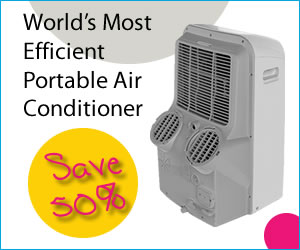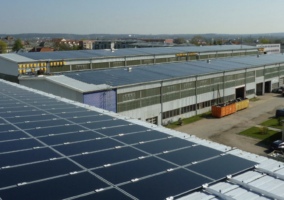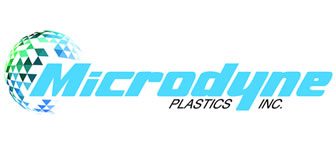Inland Empire Company Proving that All Air Conditioners Are Not Equal

Portable air conditioner capacity & efficiency – The big lie
Loma Linda, CA – D48 Energy Management is a California based climate control hardware supplier focusing on extreme efficiency and wholesale distribution. Today portable air conditioners fly under the federal and state efficiency regulatory radar. Efficiency rating for portables is not required to be third party lab tested and the consumer is at the mercy of the honesty of the manufacturer. Even if the manufacturer is honest with its efficiency results, it’s what they don’t tell you that makes for a difficult buying decision*.

Portable air conditioners are not like window air conditioners and do not affix to a single window, most are freestanding units that may be moved, (the majority of portables are usually ½ to 1 Ton or 6000 to 12000 BTU and are mounted on rollers or wheels) from room to room and use a single duct tube to exhaust warm air to the outside through the tube and window adaptor sealing plate assembly. These single tube portables typically provide no more than 40% to 60% of their rated capacity in real operating conditions because in the process of removing heat from the inside they draw in hot, humid outside air.
The reason for this is that single tube portables use cool dry inside air to send the room heat outdoors causing negative pressure inside the space being cooled and a negative feedback heat loop. This negative pressure caused by a single hose, (imagine water leaking into a submarine) causes hot air and humidity from the outside to be sucked back into the room through the windows, doors, electrical outlets and ceiling. At the same time, they use 100% of their rated power more often and for longer run times than they should by continually trying to remove the heat generated from bodies, cooking, electronics, the dog and cool the accelerated introduction of hot humid air caused by single hose negative room pressure. That means both capacity and efficiency are substantially less than stated by the manufacturer, (manufacturers of single tube portables do not account for negative pressure) which leads to undersized and poorly performing portables, higher than expected electric costs and downright angry, hot customers.
The few portable air conditioners available today that use dual hose technology deliver close to or above their maximum BTU rating promised. Dual hose portables bring in air from the outside through one tube to blow over and cool the compressor and then back to the outside in another tube, (both are connected side by side to a similar window adapter sealing plate) to the outside creating a balanced pressure environment inside the room. This dual hose solution allows the portable to easily remove the heat being generated inside the room while running the compressor much less and keeping operation costs within expectations. A portable that runs its compressor less will last longer, save on power costs and make a happy customer.
Most portable air conditioners use low efficiency “dumb” compressors that are noisy and are constantly turning on and off rather than quiet, high efficiency DC-Inverter variable speed compressors. For the above reasons, portable air conditioners using dumb compressors, (95% of portables made today) generally have and deserve a poor reputation for capacity and efficiency. A portable with a DC Inverter compressor is three times as quiet as portables with dumb compressors and can save 30-40% in electrical consumption. One or two manufactures produce a whisper quiet, dual hose, DC Inverter portable air conditioner today that can save 50-75% in electrical consumption. It costs more to build an ultra high efficiency, variable speed compressor, dual hose portable air conditioner, but some manufacturers believe that smart customers will pay more provided they can quickly and repeatedly recover the price difference through longer product life, quieter operation and lower electricity costs. These more expensive portables are even built to allow the user to never have to empty a condensate tank making these portables virtually maintenance free, (except for cleaning the air filter).
*But what about portable air conditioner capacity and efficiency ratings? Why the big lie?
It’s not exactly a lie, just an omission, but the result is very misleading. It happens because there is no official US government required test protocol for portable air conditioners. This loophole allows portable AC manufacturers to use generic testing and rating protocols not designed for portable air conditioners. Standards are in the process of development at the US Department of Energy. The test protocols currently used in the portable AC industry for single tube portable AC units are only accurate if conditioned indoor air temperature and outdoor air temperature are the same, (which is not usually the case) on a day when you are using air conditioning. As explained in this document from the US Department of Energy, portable air conditioners are self rated by their manufacturers based solely on the amount of cooling performed between the supply and return on the room-side which ignores crucial outdoor temperature data. According to the Department of Energy, all single tube portable AC units are dramatically over-rated and have much lower net capacity than claimed. All manufacturers know their capacity ratings are overstated, but somewhat understandably, no manufacturer is willing to switch to a rating system that provides lower performance ratings until all other manufacturers are required to do so. The DOE is currently considering new policy that may eventually change the way portable air conditioner units are rated.
Most dual hose, DC Inverter portable air conditioners are tested and rated per proper AHRI 220/240 using both indoor and outdoor temperature test conditions. They are proven to deliver 100% of its1BTU rating. And because of its DC Inverter compressor, it can operate at hundreds of different power settings to match its capacity to current conditions and conserve power at times when full capacity is not needed. Variable capacity DC Inverter systems are known to consume 30-40% less power than fixed speed systems. Dual hose systems provide up to 65% more cooling capacity per watt consumed. Only a variable capacity DC Inverter compressor combined with a dual hose design produces the world’s most efficient portable air conditioner. On average, these portables provide the same cooling for over half of the power consumption, or twice the cooling for the same power when compared to any other portable air conditioner.
A new breed of portable air conditioners
So although there are several years remaining until portable air conditioners are all third party lab tested and rated on the same standards, several portable manufacturers are leading the way by incorporating the best technology now and self testing to standards that may be adapted by the entire industry. There is a new breed of efficient, quiet and trouble free portable air conditioners coming on line and available in the market today and the consumer just needs to look for them.
About D48 Energy Management
D48 Energy Management is a California based climate control hardware supplier focusing on extreme efficiency and wholesale distribution. For more information please visit: www.d48.us or contact the company by email at info @ d48.us




















